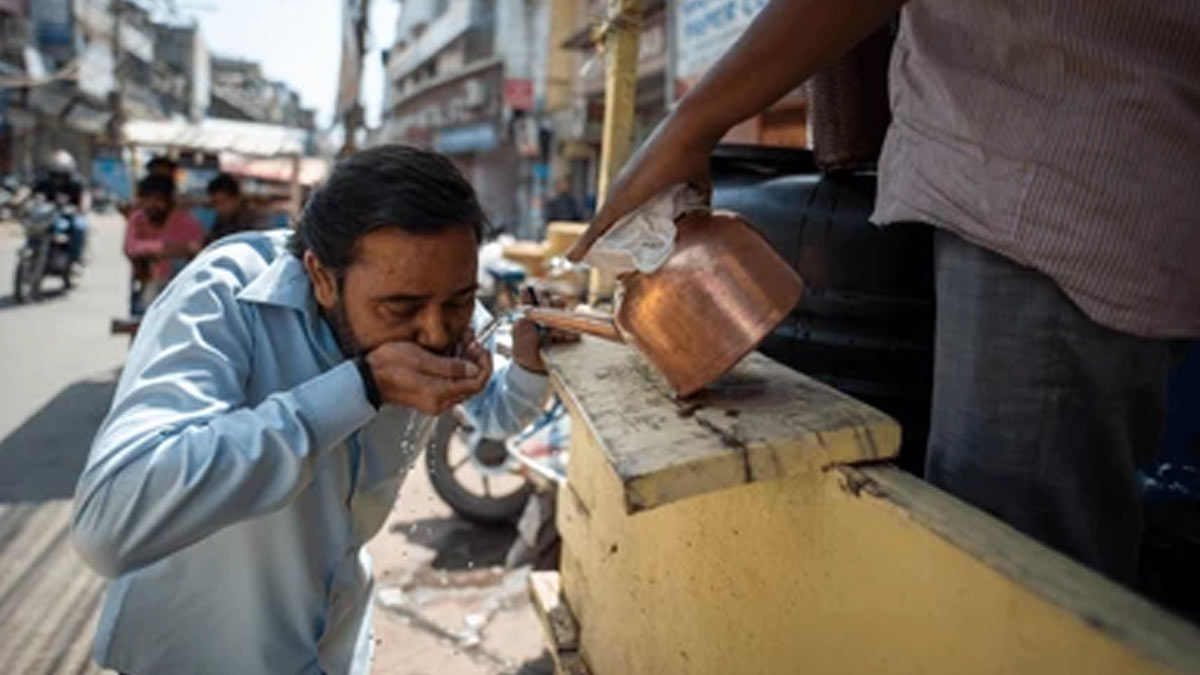
At least nine unidentified individuals were found deceased in Noida, Uttar Pradesh, on Wednesday, amidst a brutal heatwave gripping the region. The exact cause of death remains under investigation, according to Noida police officials.
Table of Content:-
This is one such horrifying incident this season that highlights the dangers of extreme heat. However, a marginal and brief respite is expected from this brutal heatwave in parts of North India.
The India Meteorological Department (IMD) predicted light to moderate showers and winds across Delhi-NCR and neighbouring areas on Thursday, June 20th. This comes as welcome news after a prolonged heatwave gripped the region. However, IMD alerted that the heatwave would linger despite this brief break.

Heatwave To Continue In North India
Despite the rain, large swathes of northern and eastern India continue to experience a relentless heatwave. This has resulted in a rise in heatstroke cases, prompting health advisories for hospitals to establish dedicated units for such patients.
Maximum temperatures across Punjab, Haryana, Chandigarh, Delhi, Uttar Pradesh, and parts of Rajasthan remain high, ranging from 43 to 45°C. Hospitals in the national capital reported a surge in heatstroke and exhaustion cases, with several fatalities in the past two days.

World Health Organisation: Safety Guidelines Against Extreme Heat
Heatstroke is not to be taken lightly. It is a serious medical emergency that occurs when the body gets overheated and loses the ability to regulate its temperature by itself through sweating.
When the body temperature increases, it starts needs a higher level of oxygen which causes a spike in the heart and breathing rate. Heatstroke can even lead to organ damage and even death.
With these extreme conditions, the World Health Organisation (WHO) urges people to stay safe by followimg these safety guidelines:
- Limit Outdoor Activity: Avoid strenuous exercise and outdoor activities during the hottest part of the day. Seek shade, as temperatures in direct sunlight can feel 10-15°C higher. Aim for 2-3 hours daily in a cool environment.
- Stay Hydrated: Drink plenty of water regularly, aiming for one cup per hour and at least 2-3 liters daily. Watch out for vulnerable individuals, especially those over 65 or with pre-existing health conditions.
- Cool Your Surroundings: Utilise night air to cool your home by opening windows after dark. During the day, keep windows closed and covered with blinds or shutters. Minimise electricity usage – turn off unnecessary appliances and use fans only when temperatures are below 40°C. If using air conditioning, set it to 27°C and combine it with a fan for a cooler feel while saving energy.
- Dress for the Heat: Wear loose-fitting, lightweight clothing and bed linens. Take cool showers or baths frequently. Wet your skin with a damp cloth, spray, or wear damp clothing for additional cooling.
- Protect Infants and Children: Never leave children or pets in parked vehicles. Avoid direct sunlight with children during peak hours, keeping them shaded or indoors. Dress them in lightweight, loose-fitting clothes with hats, sunglasses, and sunscreen. For infants, use a wet, thin cloth over strollers instead of dry fabric, and consider a portable fan for extra cooling.
Also Read: Delhi Reports First Heat Stroke Casualty: Here Are Its Symptoms, Consequences, and Treatment
Although the IMD has predicted rainfall in many parts of Northern India, they have also warned that this is just a temporary break and hot weather could still prevail till monsoon. This means that the chances of a heat stroke and other heat related illnesses are still very much possible. Do not take heat stroke lightly. It can be fatal. By following these precautions, residents can mitigate the risks associated with the ongoing heatwave in North India.
Also watch this video
How we keep this article up to date:
We work with experts and keep a close eye on the latest in health and wellness. Whenever there is a new research or helpful information, we update our articles with accurate and useful advice.
Current Version